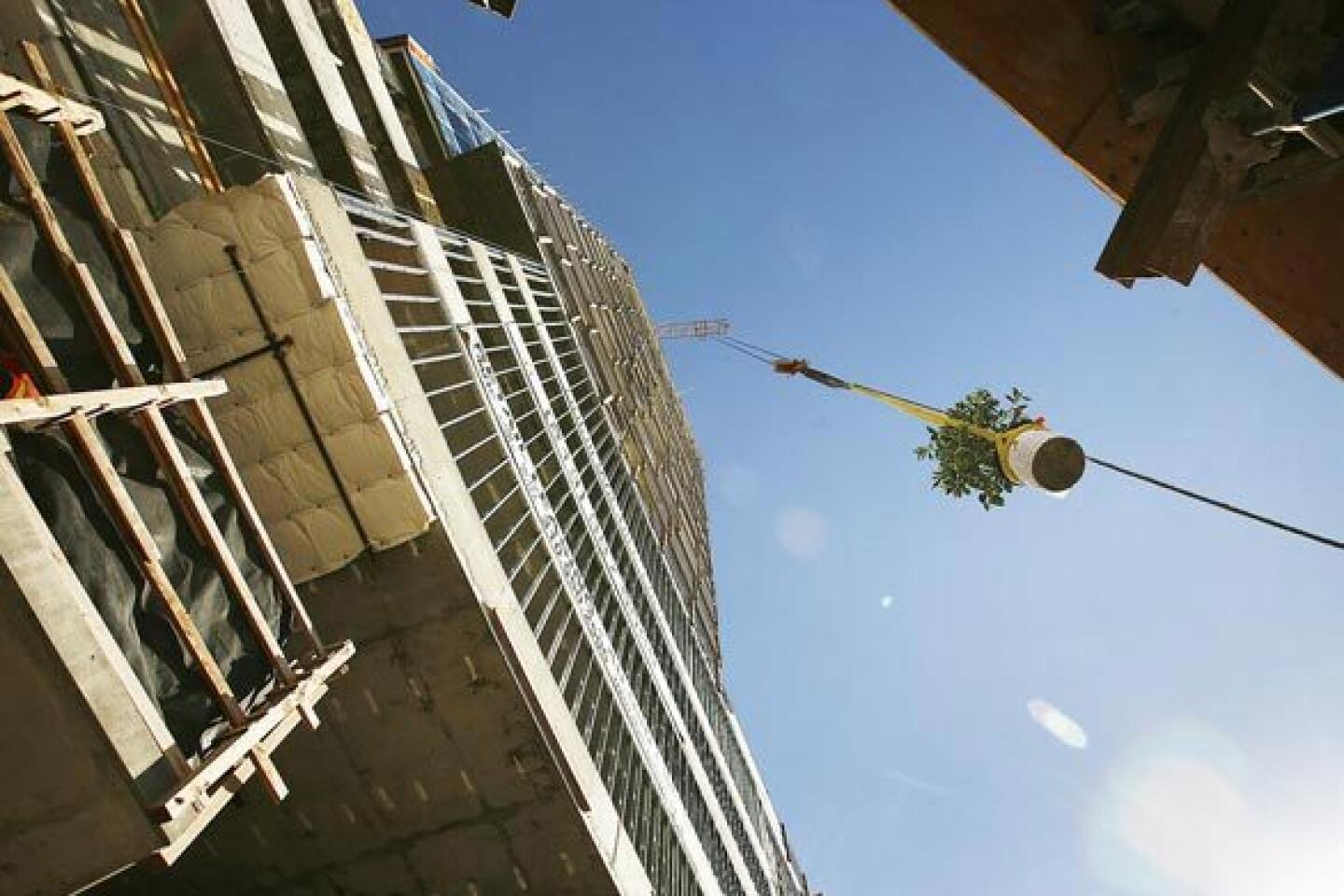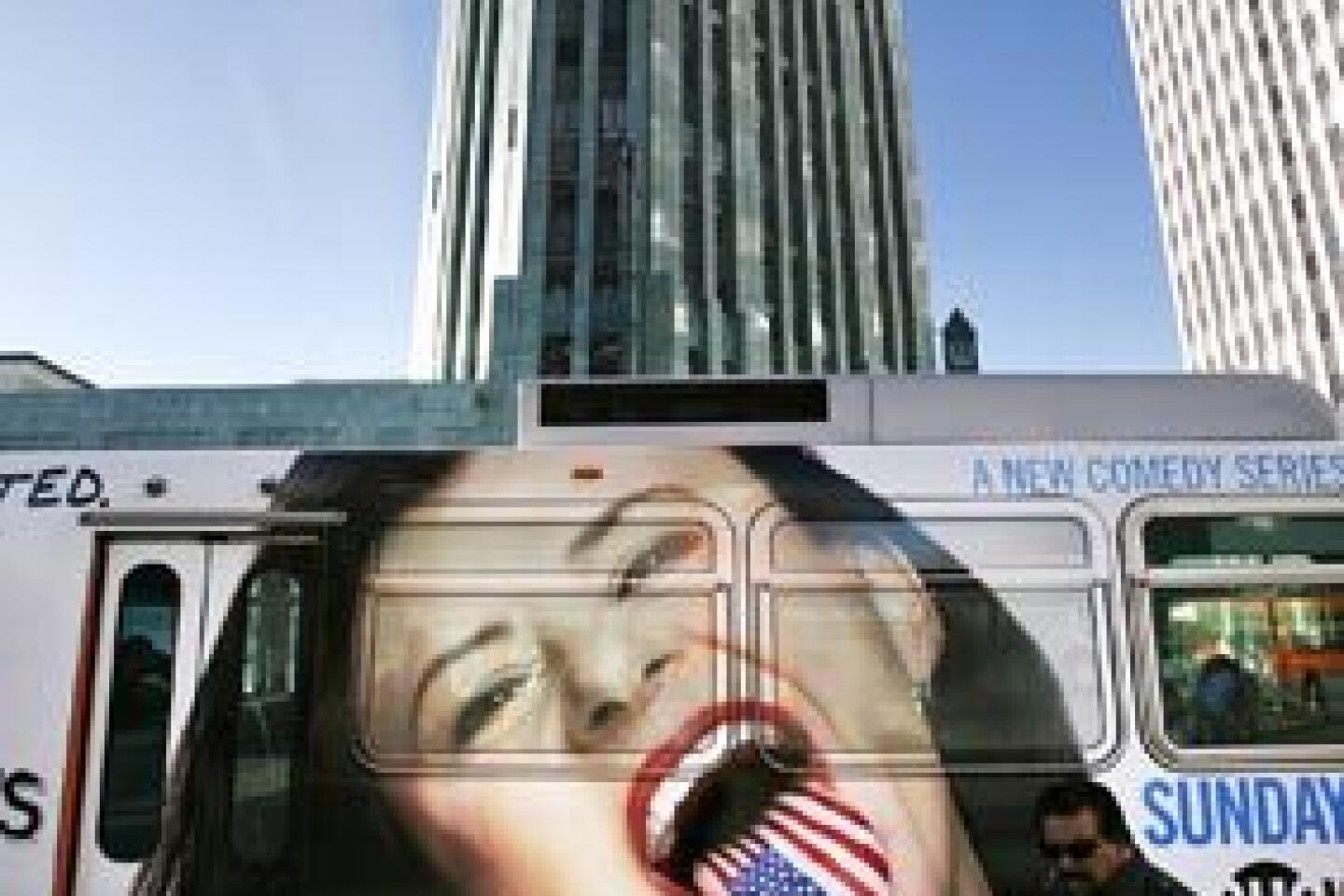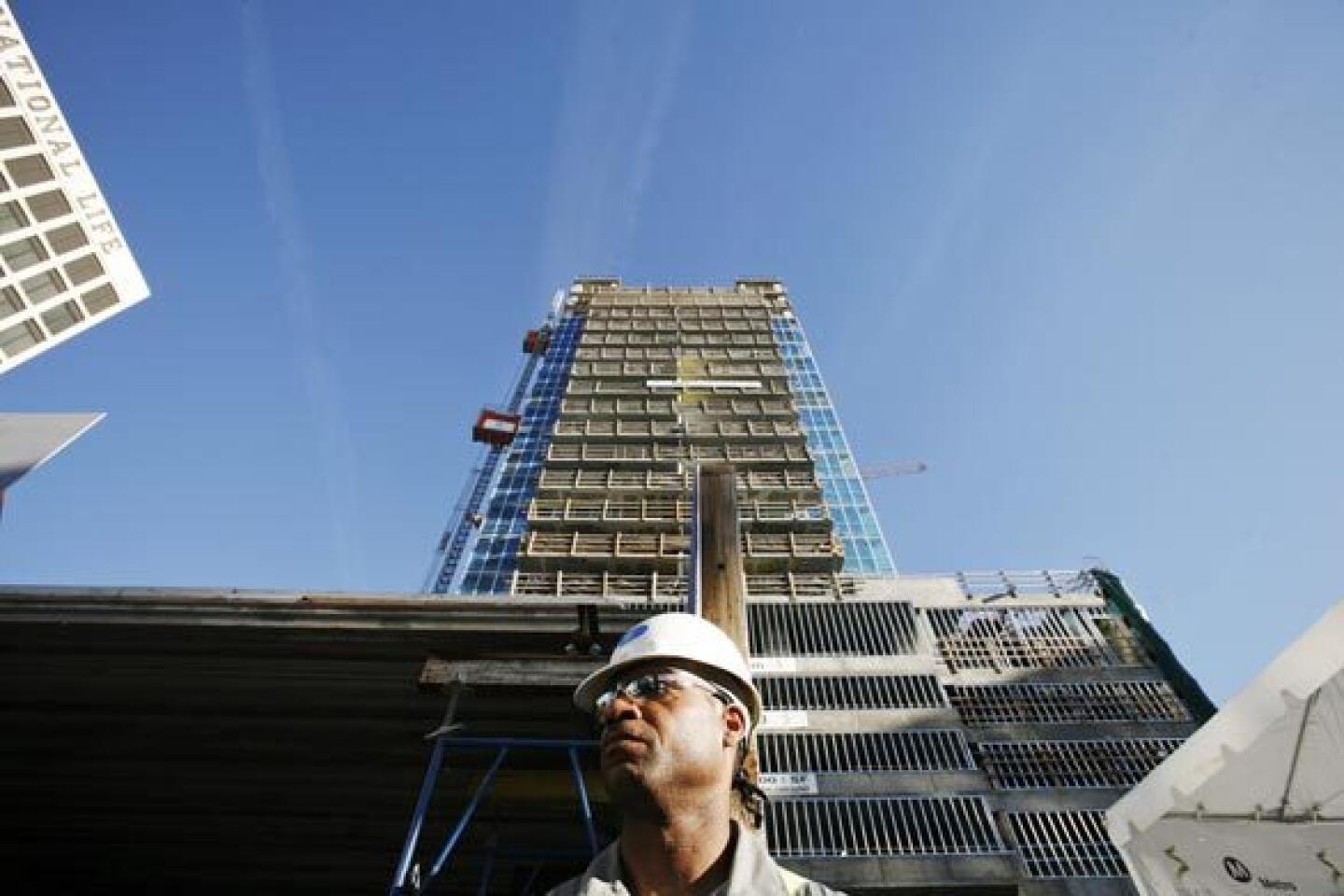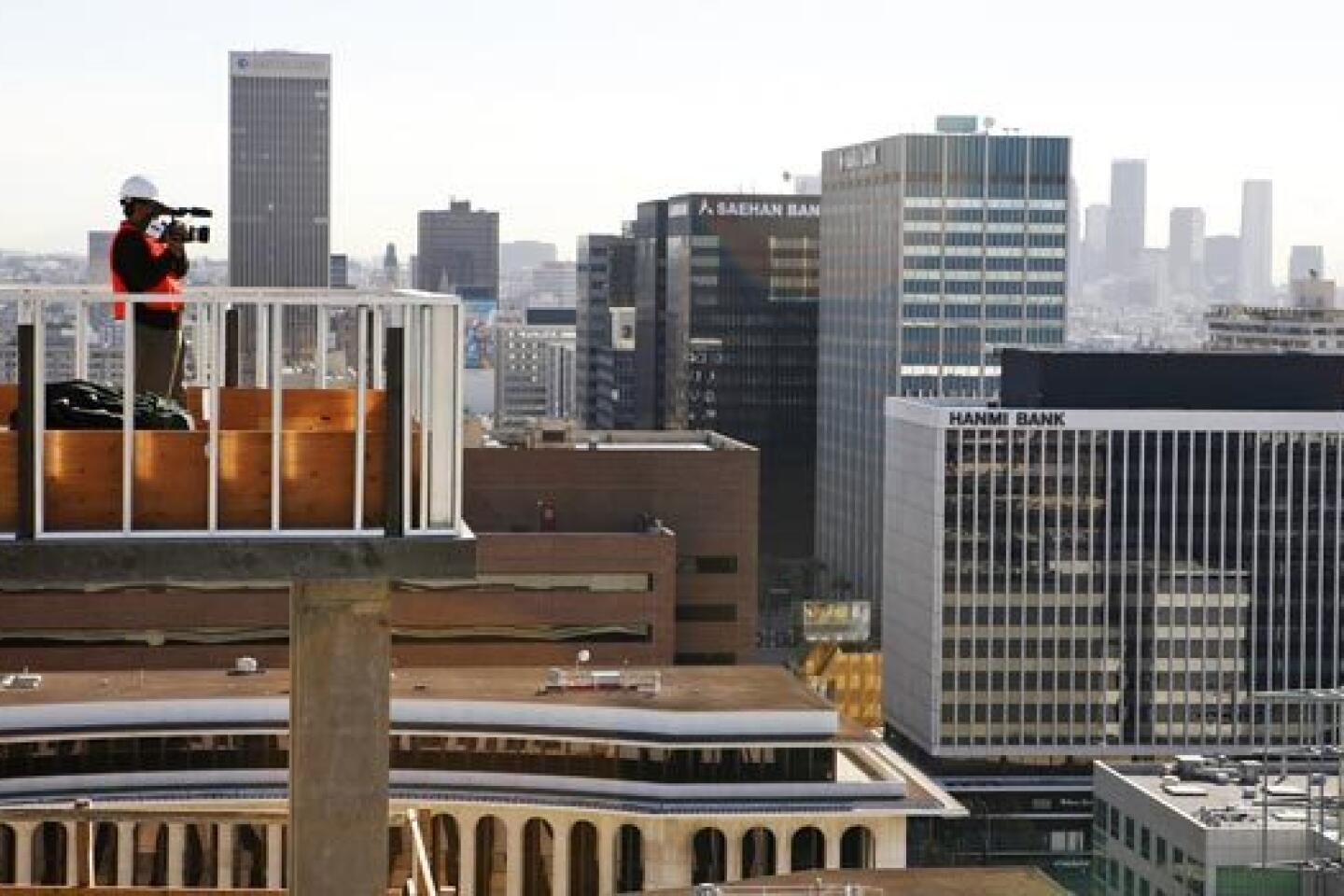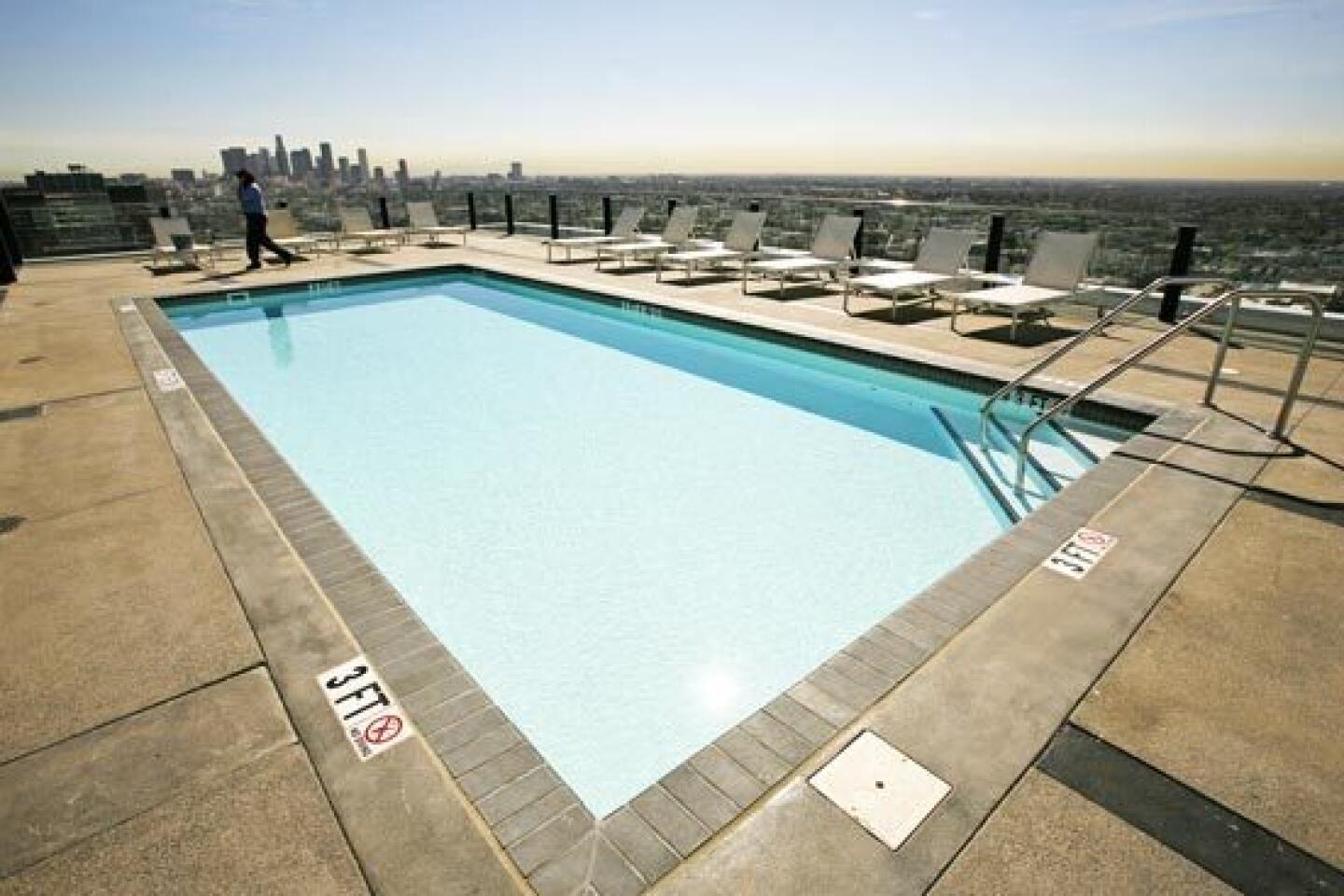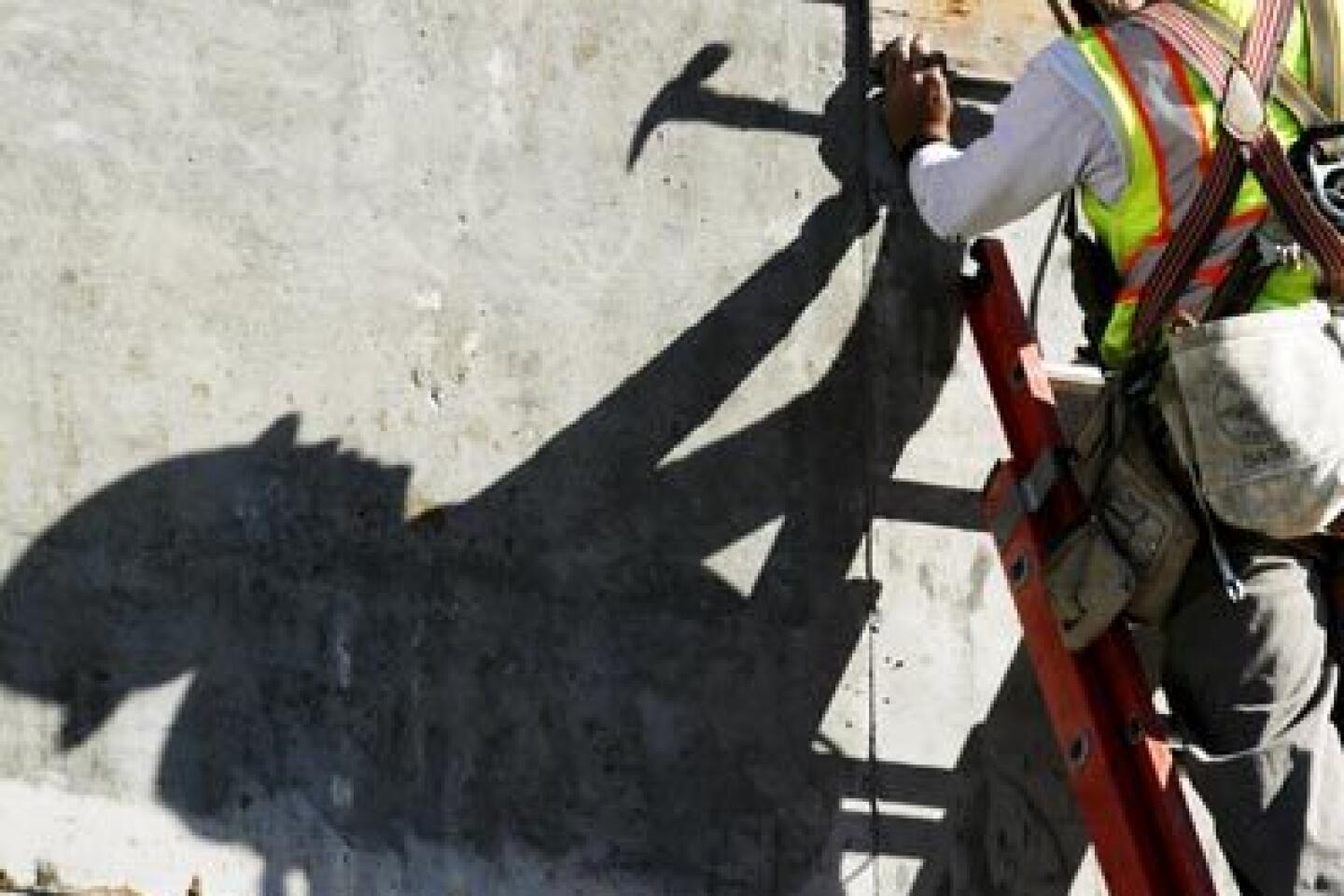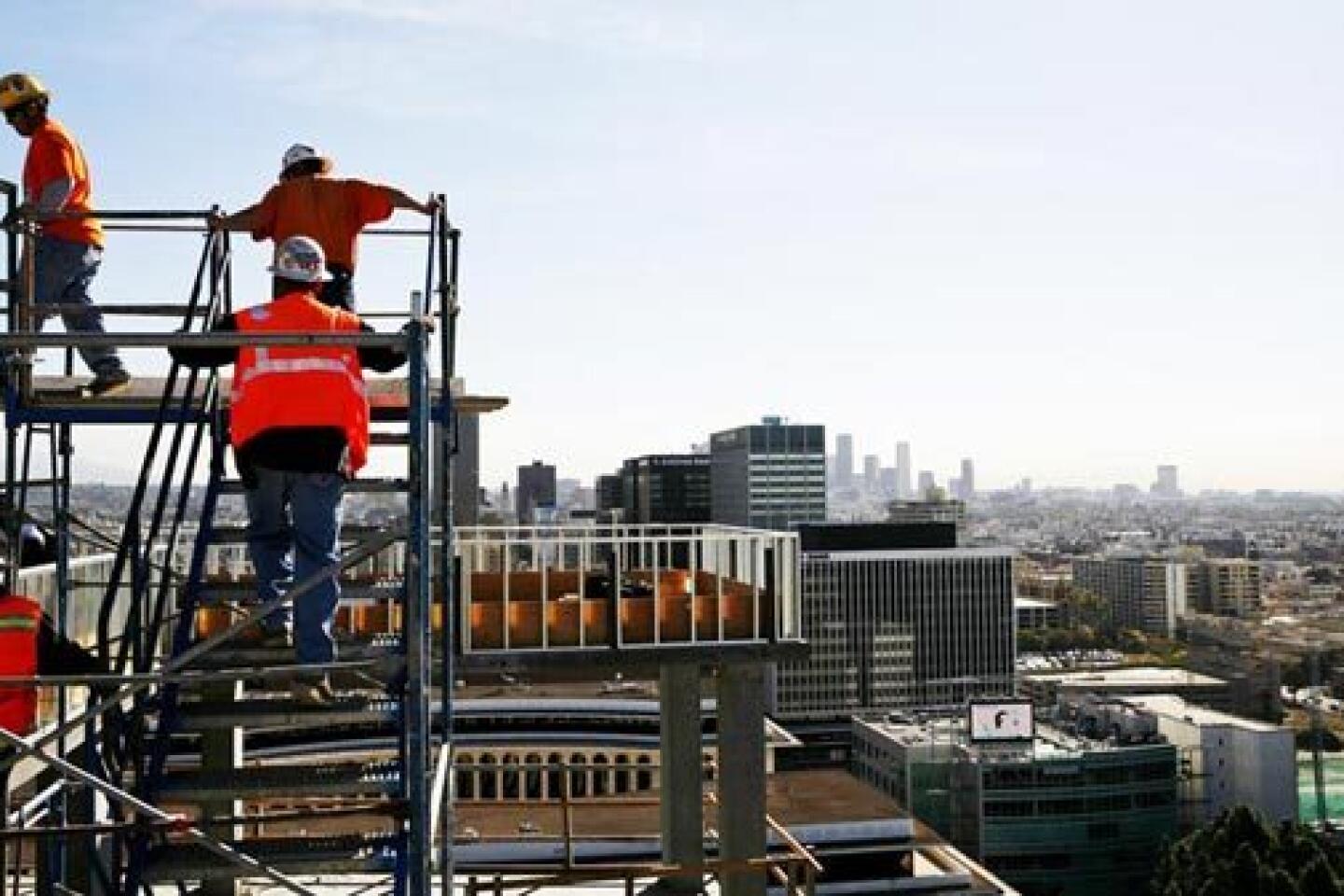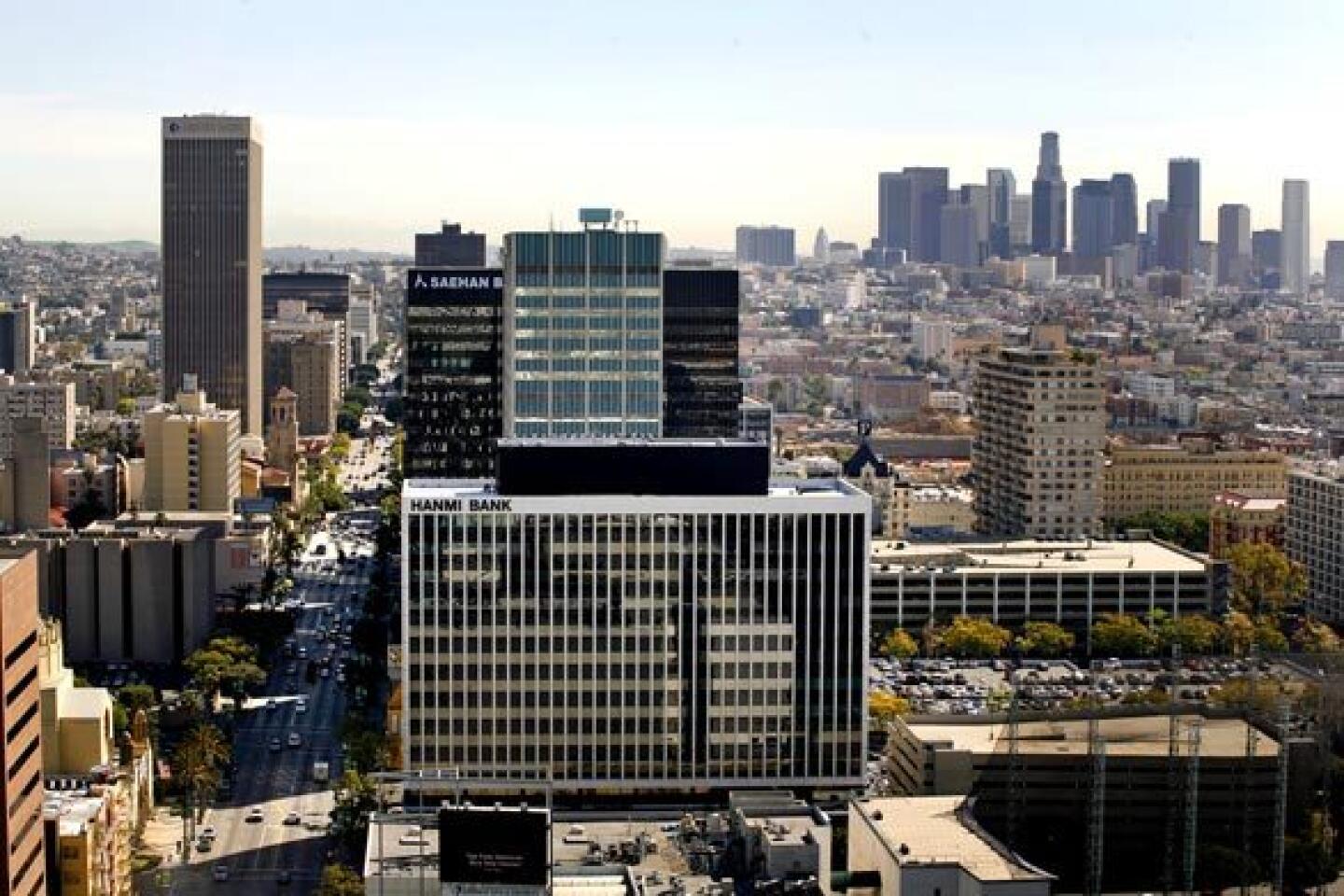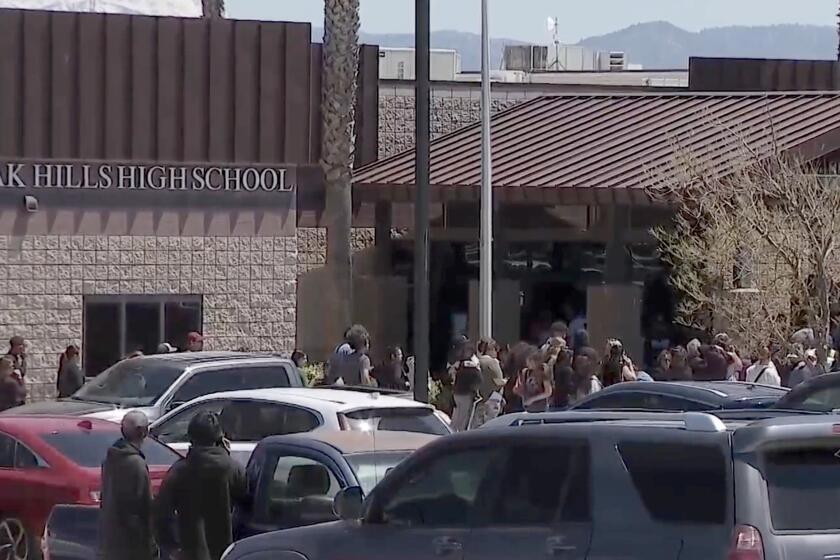Projects breathe life into Wilshire corridor
The 22nd floor of the new Solair building, a residential, retail and transportation hub at Wilshire Boulevard and Western Avenue, is still just a concrete platform -- the building’s official opening is months away.
But from that high up, it’s easy to see how the building stands at the crossroads of change along the storied boulevard.
Wilshire Boulevard as it stretches west from downtown was for decades a center of commerce, with a row of high-rise buildings once occupied by business powerhouses like Union Bank, Texaco, IBM and Getty Oil.
Those corporate logos disappeared from the tops of the towers long ago. But in the last few years, Wilshire has been reborn as a stylish residential address -- catering at least in part to wealthy Koreans who have flocked to the area.
There are more than two dozen residential developments -- adding up to thousands of new housing units -- either completed or proposed along the boulevard between downtown and the Miracle Mile district.
Some of the projects are rehabs of shuttered office towers, such as the 1100 and 1010 Wilshire towers and the Mercury, the old Getty Oil headquarters across the street from Solair. Others are brand-new projects, sleek glass-and-steel towers like the Solair, where officials gathered Monday to mark the building’s “topping off”--the point in construction when the roof’s concrete is poured and the structure itself fully enclosed.
“We expect this to be a hub, a focal point for the Wilshire corridor,” said L.A. County Supervisor Yvonne B. Burke, of the project, which sits atop a Purple Line station.
But the building boom is meeting with growing concerns from some residents. There is particular alarm over new projects planned near the corner of La Brea Avenue and Wilshire, already a major traffic bottleneck, where hundreds of new housing units have been proposed.
“All we are seeing is growth and not the infrastructure,” said Jim O’Sullivan, president of the Miracle Mile Residents Assn.
“All of these projects have what they call ground-floor commercial. What you get is Jamba Juice or Subway or Starbucks. That flies in the face of what the city calls smart growth,” O’Sullivan said. “Smart growth is supposed to combine living and office spaces [to cut down on commutes]. No one who is moving into these new apartments is going to go down and work in Jamba Juice or Starbucks.”
He and others said the city should encourage more office development on the sites, because those would bring in jobs where new area residents might work.
But other city leaders strongly support the revitalization. They note that some buildings that are being rehabbed had long been either empty or in decay -- like the Art Deco building that once housed Desmond’s department store west of LaBrea, and the mid-century Colwell Co. building north of Vermont.
The stretch of Wilshire was once one of L.A.’s most fashionable districts, home to the Ambassador Hotel, Bullocks Wilshire department store and close to the mansions of Hancock Park.
During the 1960s and 1970s, the Mid-Wilshire area took on the feel of a city center, with a canyon of high-rise office buildings between downtown and Hancock Park (where residents insisted on height limits).
But by the late 1980s, the area was showing signs of decline.
The riots of 1992 -- and a recession in the early ‘90s -- hit the area hard, as companies vacated some of the buildings.
The current revival is being sparked in part by investment from Koreans and Korean Americans, which is fueling a shift in the area toward more upscale housing.
This demographic shift is apparent to George W. Mantor, community sales manager for the Mercury, a 1963 office tower designed by Claude Beelman. Condos in the building are now selling for $400,000 to more than $1 million.
“In my profession, we’re not supposed to notice,” Mantor said, “but interest in this area is primarily driven by Koreans.”
One reason: South Korea has allowed its residents to invest more and more capital abroad, and Mantor has seen many of those dollars invested in residential housing in Koreatown.
John Kwon, 70, moved to Los Angeles from Chicago with his wife and bought in the Mercury because, he said, “It was the first high-rise in the Korean community. It’s convenient. Everything is here.”
Still, Kwon has set his sights on another Wilshire project. He is eyeing the Solair’s construction project with the eye of a concerned parent, because he recently bought a unit on the building’s top floor.
“It’s beautiful up there,” he said.
The Wilshire corridor west of downtown is one of the few areas in the city -- along with downtown and Hollywood--that is exempt from a city law passed in 1986 aimed at stopping high-rise towers that had made certain parts of Westwood and the Valley resemble urban canyons.
The law cut in half the allowable size of future high-rises in about 70% of the city, but allowed a higher floor-to-area ratio for the exempt areas.
Christopher Pak, one of the partners in the Solair project, said the change “is driven by the sheer nature of the city evolving. It’s becoming more metropolitan than suburban.”
In addition, Wilshire is seen as one of the city’s few transportation corridors, with bus lines and rail stations helping to whisk residents from there to other parts of the city.
“Wilshire Boulevard is one of the great streets for mixed use,” said development consultant Kate Bartolo. “With its wide boulevard streets, light rail and bus service, Wilshire is an ideal corridor to creatively mix uses that result in both job creation and housing. Focusing growth on streets built to accommodate it can also better preserve residential neighborhoods.”
Roger Moliere, chief of the MTA’s Real Property and Development division, said the transit agency has partnered in two residential projects above subway stations along Wilshire -- the Solair and the rental-retail project at Wilshire and Vermont, jointly developed by Urban Partners and MacFarlane Partners.
The idea, Moliere, said, is to “bring attention to using public transportation.” But he added that the MTA is fussy about what gets built there: “We try to get a project that fits in with what the area needs. We don’t just plop something down.”
Critics, however, have questioned whether building housing near transportation lines gets motorists out of their cars. For example, the subway under the Solair does not make the link to the Westside, a key L.A. destination.
Officials want to extend the subway west to Santa Monica, but it remains unclear how they can afford the $6-billion cost.
Nonetheless, some city leaders and residents see progress on the boulevard. Many said they lived through years of crime and neglect -- graffiti on buildings, little pedestrian life -- and are encouraged that some of the old office buildings are being reused.
Wilshire Boulevard, especially on the Miracle Mile, has “one of the greatest collection of Art Deco buildings in this city, or in any city,” said Ken Bernstein, manager of the city planning department’s Office of Historic Resources. “We are seeing renewed interest in those buildings.”
Bernstein pointed to the American Cement Co. tower near MacArthur Park, a landmark of mid-century architecture that was recently rehabbed into live-work spaces.
Standing on the pool deck atop the Mercury, Brian Watson, the building’s assistant manager, swept his hand over the vista, pointing out the FaithDome in South Los Angeles, the Hollywood sign and other highlights.
Actor Scott Baio was married next to the pool recently, he said, and Rich & Skinny Jeans held a party there.
“High-rises are popping up everywhere,” Watson said. “The whole mantra of L.A., from here to downtown is live, work and play.”
More to Read
Start your day right
Sign up for Essential California for news, features and recommendations from the L.A. Times and beyond in your inbox six days a week.
You may occasionally receive promotional content from the Los Angeles Times.

